The Creative Talent 2025 Outlook
Date
Gain insights into the future of creative careers with The Creative Talent 2025 Outlook by Calibre Careers.
In an ever-changing job market, creative professionals are shaping the future of work with their unique problem-solving skills and innovative thinking. But what do these individuals value most, and how are their priorities evolving?
The Creative Talent 2025 Outlook explores the perspectives of creative professionals across diverse fields, from design and content creation to marketing, operations, and HR. It examines key shifts in work culture, evolving career aspirations, and the impact of AI. This report offers invaluable insights for both creatives and organizations working towards success, recognizing the potential conflict between creative vision and business needs.
Executive Summary
The creative industry is undergoing a transformative phase, shaped by the rise of hybrid work, the rapid integration of AI, and a growing emphasis on work-life balance. These trends are defining the experiences of today’s creative professionals, who are navigating a landscape of both opportunity and uncertainty.
The Calibre Creative Careers 2025 Outlook survey, conducted among 243 respondents across 17 countries, reveals a dynamic cohort of young, highly educated professionals seeking meaningful work, flexibility, and career growth. While challenges such as job security and market instability persist, the data highlights a strong willingness to embrace change, adapt to new technologies, and prioritize well-being.
Introduction
The Creative Talent 2025 Outlook survey provides a comprehensive understanding of the evolving landscape for creative professionals. With responses from 243 individuals across 17 countries, the survey captures the aspirations, anxieties, and preferences of a predominantly young (59.1% aged 18–24) and highly educated (86.2% holding at least a Bachelor’s degree) demographic.
The analysis focuses on key themes such as career goals, work preferences, the role of AI, and the impact of social media on job searches. By exploring these trends, the report offers actionable insights for individuals and organizations navigating the future of creative work.
Key Findings
The Creative Talent 2025 Outlook reveals a dynamic, ambitious cohort of creatives, primarily young (59.1% aged 18–24) and highly educated (80% with at least a Bachelor’s degree), driven by a desire for exploration, meaningful work, and the integration of AI into their creative processes.
- Work-Life Balance Dominates Priorities 72.7% of respondents cite work-life balance as their top concern, highlighting a shift in workplace values toward prioritizing well-being and personal time.
- High Job Search Activity A vast majority (94.3%) are actively seeking new job opportunities, highlighting a dynamic job market.
- A Landscape of Opportunity and Uncertainty High levels of concern regarding job security and growth opportunities suggest instability in the current job market.
- Social Media’s Growing Role in Job Search 97.7% of candidates rely on platforms like LinkedIn, Instagram, and more recently Threads for job searches, indicating a shift in how employment opportunities are approached.
- Interest in Career Advancement and Skills There is a strong desire for advancing careers and acquiring new skills, signaling a potential market for training and development programs.
- The AI Imperative 78.4% of respondents feel comfortable using generative AI in creative work, suggesting an emerging trend in the integration of technology within creative industries.
- The Rise of the Hybrid Worker 53.4% of respondents prefer a mix of remote and in-office work, reflecting evolving preferences in work arrangements.
- A Call for Meaning and Balance Creatives prioritize work-life balance (72.7%), recognition (48.9%), and positive culture (47.7%) over pay, seeking fulfillment and alignment with company values for growth and development.
A breakdown of the findings, all numbers in %.
Demographics
Location Respondents came from 17 countries, with a diverse geographic representation.
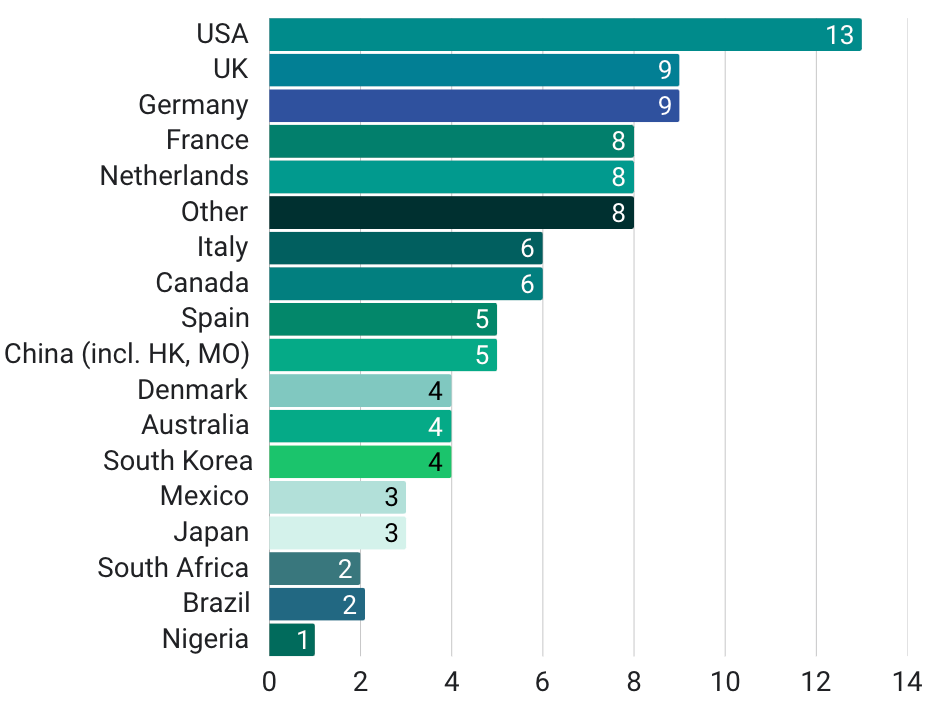
Age Range The survey is heavily weighted toward younger professionals, with a substantial majority (59.1%) falling within the 18–24 age bracket. This demographic is likely to be more digitally native, adaptable to change, and attuned to emerging trends shaping the creative landscape.
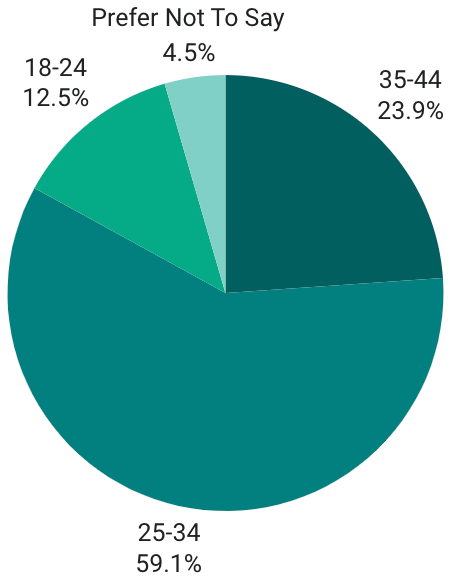
Gender The data reveals a significant gender imbalance, with 74% of respondents identifying as female and 22% as male. Non-binary respondents make up 2% of the total, while 1% preferred not to say.
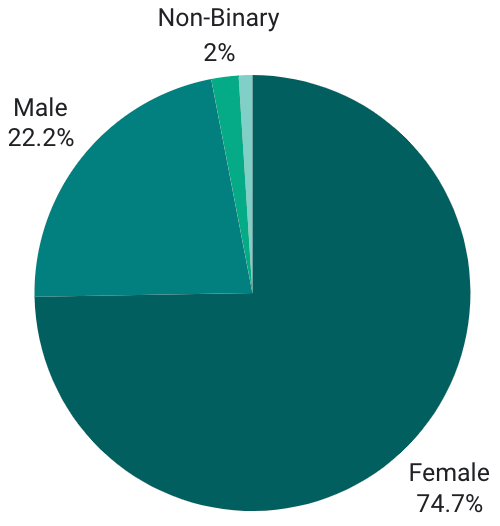
Education Level The survey respondents show a strong educational foundation, with 51.5% holding a Bachelor’s degree and 34.7% holding a Master’s degree. With 86.2% holding at least a Bachelor’s degree, this level of education likely fuels their ambition and pursuit of fulfilling careers.
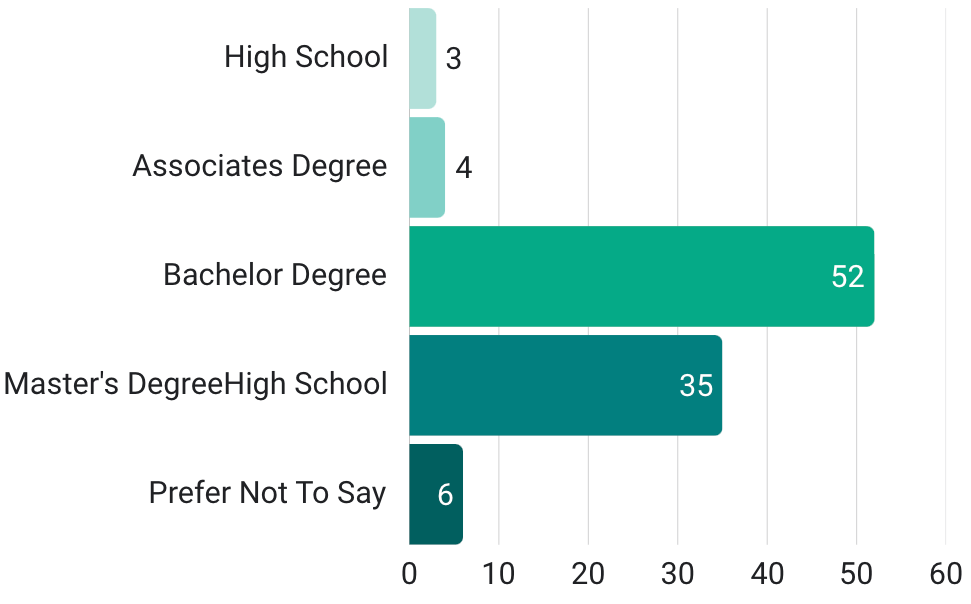
Employment Status The employment landscape is diverse, with a significant portion of respondents freelancing (21.6%) or self-employed (9.1%). This highlights the growing gig economy and the increasing prevalence of independent work within the creative sector. The presence of unemployment (25%) underscores the challenges faced by many creatives in finding stable and fulfilling employment.
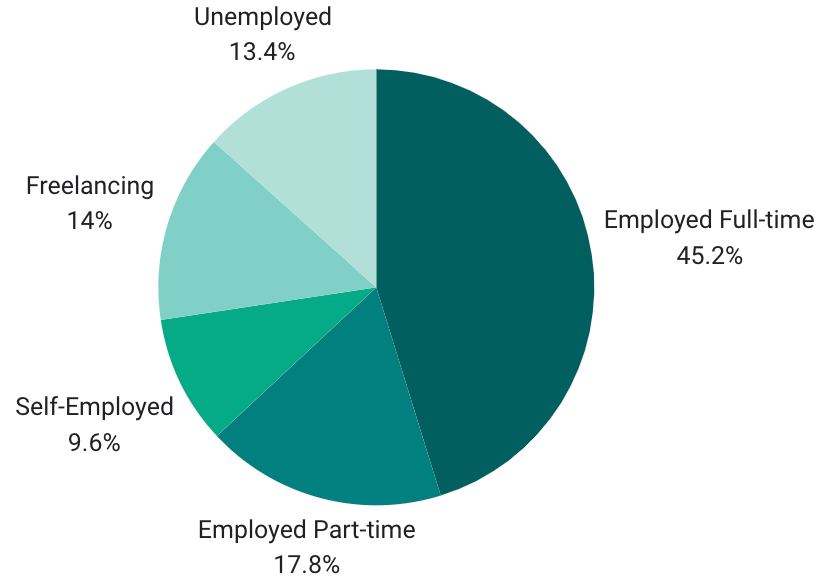
Career Categories (of the respondents) Creative 45.2% (Architecture 1.1%, Content Creation 5.5%, Design 38.6%) Communication & Marketing 25.0% (Communications 10.2%, Marketing 14.8%) Project & Operations 10.2% (Project Management 10.2%) Human Resources 1.1% (People & Culture / Human Resources… 1.1%) Sales & Retail 2.2% (Retail 1.1%, Sales 1.1%) Other 14.8% (Other 14.8%)
Job Satisfaction Job satisfaction among creative professionals is mixed: the highest percentage, 33.5%, expresses dissatisfaction, likely due to factors like inadequate pay, limited growth, or poor work-life balance.
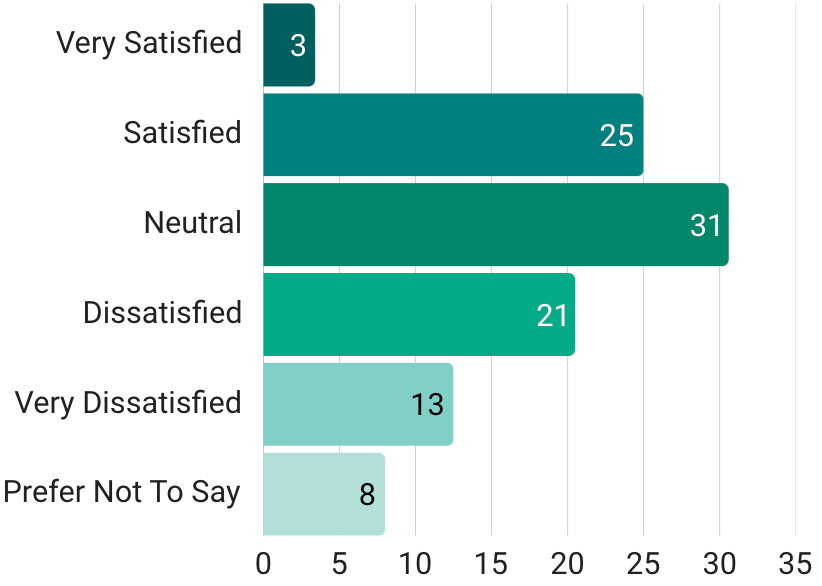
Career Goals and Values
Career Goals Exploration and growth are key motivators for this cohort. A significant proportion (67%) are actively seeking new career opportunities, reflecting a desire for professional development and a willingness to embrace change. Advancing within their current field (51%) is another primary goal, suggesting a strong ambition to succeed and contribute to their chosen industry.
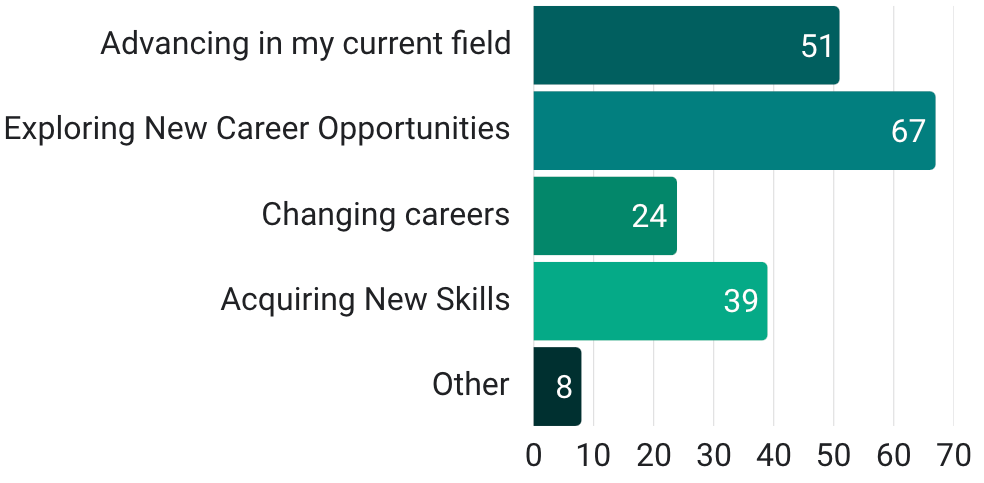
Valued Aspects in a Job Work-life balance emerges as a paramount concern, highlighting the increasing importance of flexibility and personal well-being in the modern workplace. Recognition and appreciation are also highly valued, suggesting a strong desire for acknowledgment and a sense of belonging within the company culture.
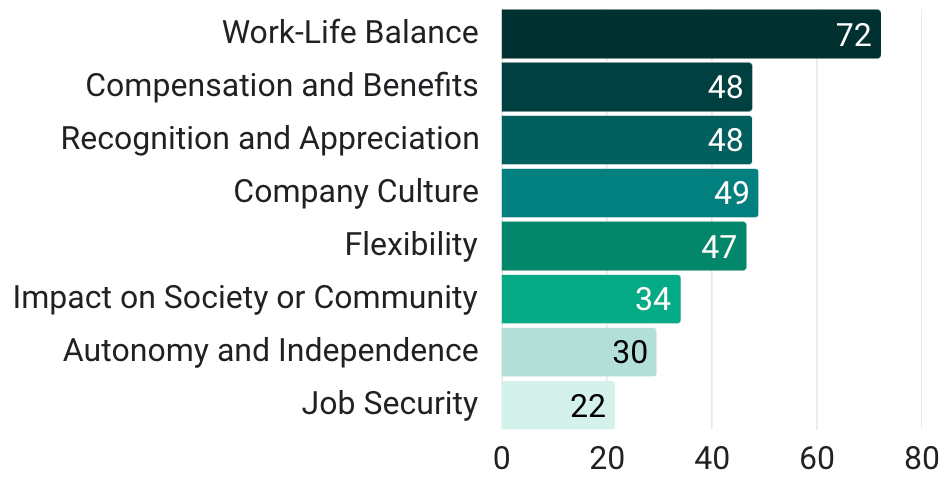
Main Concerns Finding new opportunities (55.7%) is the most pressing concern, reflecting a competitive job market. Lack of growth (46.6%), insufficient compensation (40.9%), and work-life balance issues (27.3%) further highlight challenges. Career stagnation (33%) and job security concerns (29.5%) underscore the need for a supportive and fulfilling work environment.
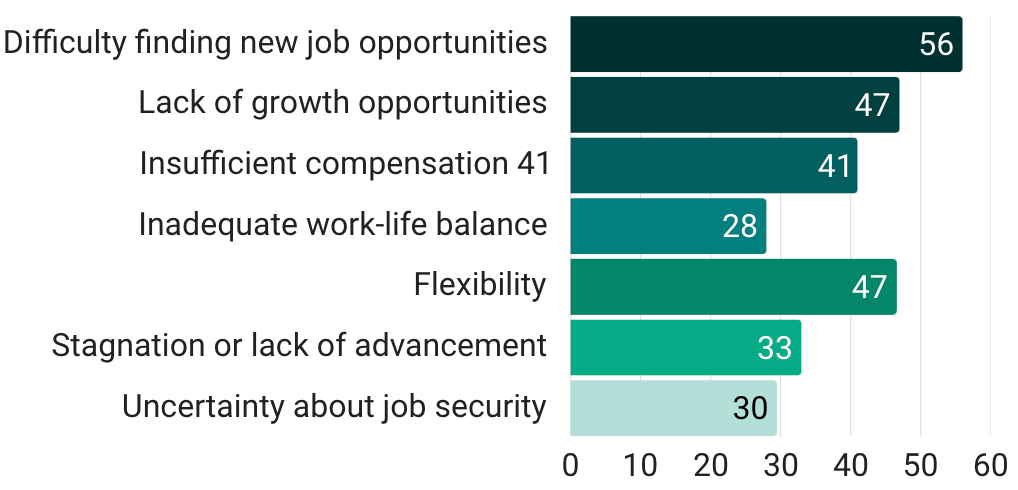
Preferred Work Style While currently, 68.2% of workers are not working remotely and 28.4% are, a strong preference for hybrid work (53.4%) reveals a growing desire for flexibility and autonomy. This trend has significant implications for employers, who must adapt to the evolving needs and expectations of their workforce by offering flexible work arrangements.
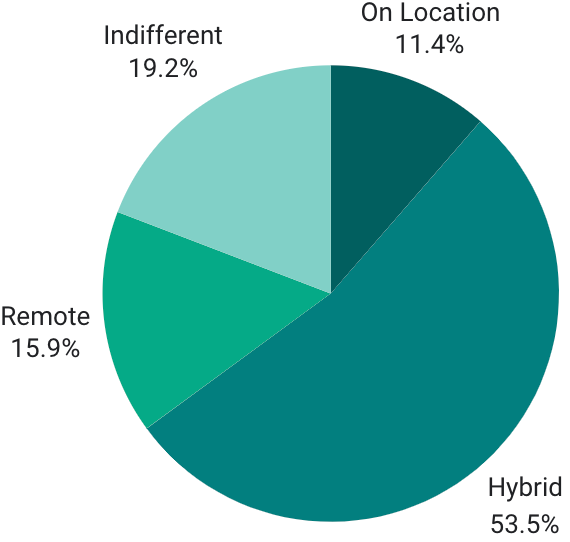
Willingness to Relocate A high proportion of respondents (77.1%) are willing to relocate for a suitable job opportunity, demonstrating a strong sense of mobility and a willingness to pursue career advancement.
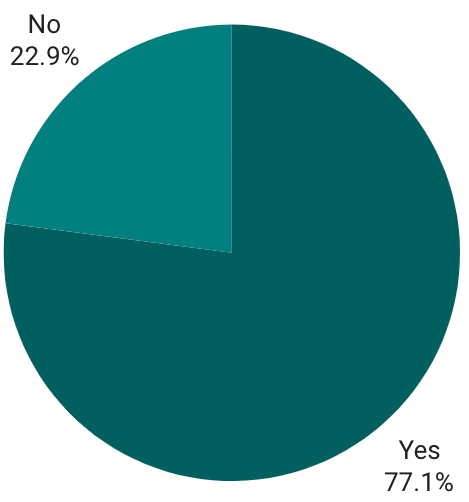
Tech and Job Search
Use of Social Media for Job Search Social media plays a crucial role in the job search, with a remarkable 97.7% of respondents utilizing platforms like Instagram and LinkedIn to find opportunities. This highlights the increasing importance of online platforms in connecting creatives with potential employers.
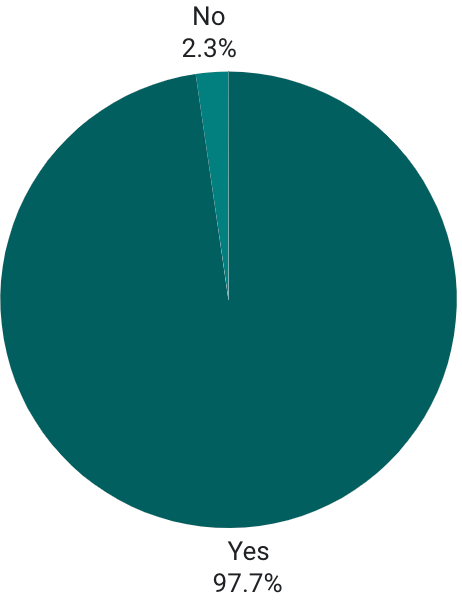
Platforms used include
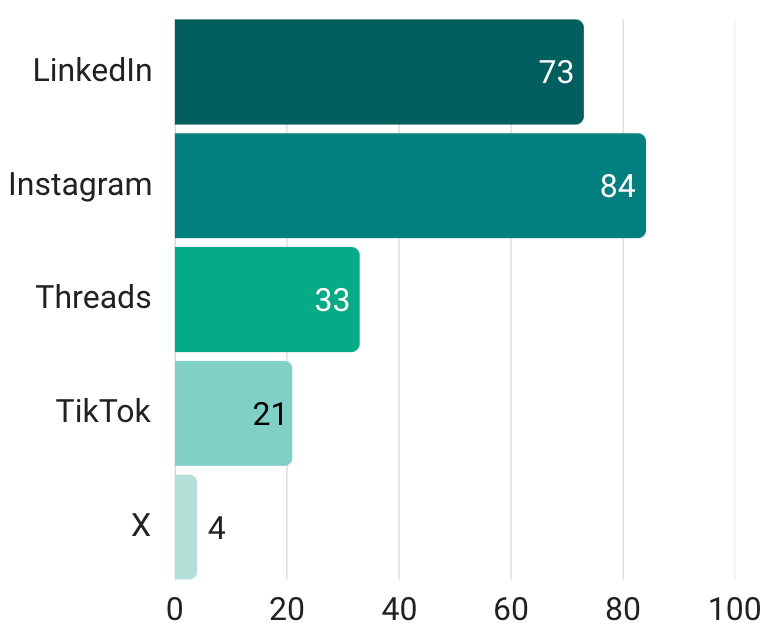
Job Search Status A large number of respondents (94.3%) are actively seeking new job opportunities, demonstrating a dynamic and active job market within the creative sector.
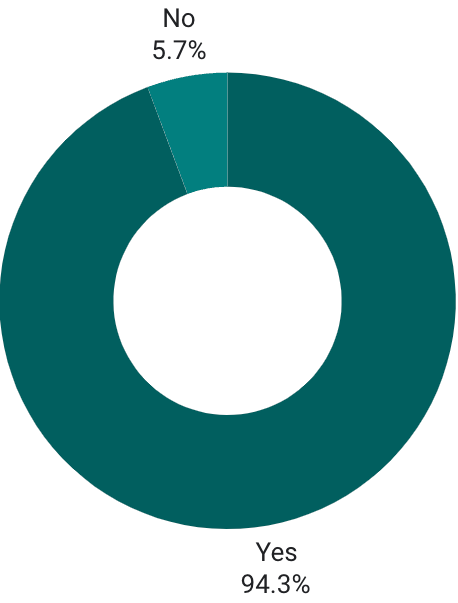
AI in Creative Work A significant portion (30.7%) of respondents use AI “often” in their creative work, highlighting the rapid integration of AI into creative processes. This suggests that AI is poised to play a transformative role in shaping the future of the creative industry.
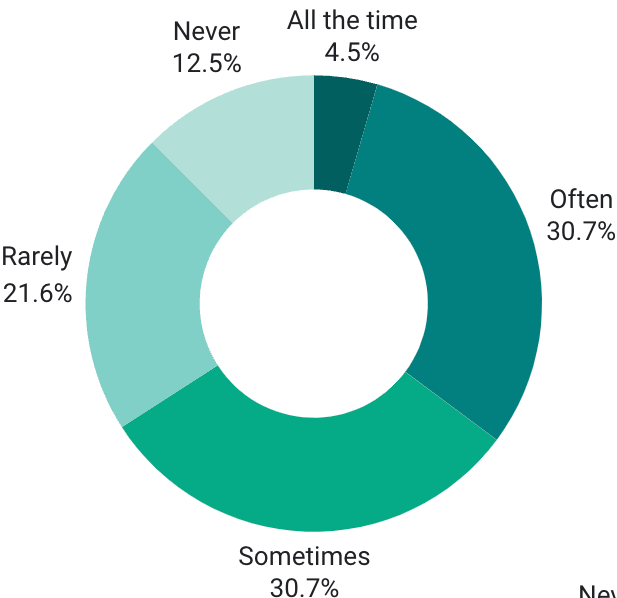
Comfort with Generative AI
Creative professionals appear largely comfortable with AI technologies, according to a recent survey. 71.1% of respondents expressed at least moderate comfort, suggesting a general willingness to adopt AI tools in their work. A smaller percentage (6.8%) reported feeling very uncomfortable, though this figure is not shown in the donut chart.
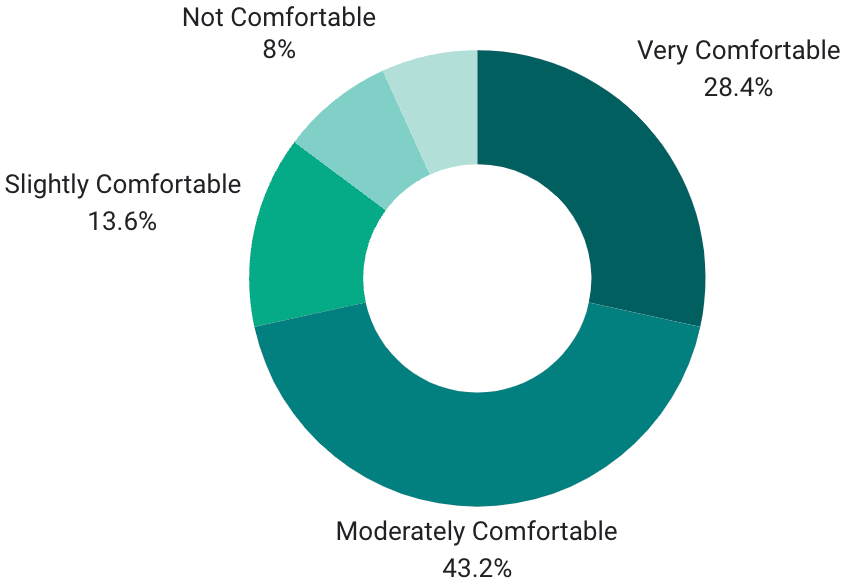
Conclusion
The Creative Talent 2025 Outlook provides a comprehensive view of the aspirations, challenges, and priorities of creative professionals across 17 countries, reflecting a globally diverse and dynamic cohort. The findings highlight a generation of ambitious, adaptable individuals who value meaningful work, work-life balance, and the integration of AI into their creative processes. Despite facing challenges such as job security concerns and market instability, creatives are eager to embrace change, leverage new technologies, and pursue career growth.
For organizations, the report underscores the importance of offering hybrid work arrangements, investing in AI training, and prioritizing employee well-being to attract and retain top talent. For individuals, the focus should be on continuous learning, leveraging online platforms for job searches, and embracing AI as a tool for innovation.
Future research could delve deeper into the long-term impact of AI on creative industries, the effectiveness of hybrid work models, and strategies to promote diversity and inclusion within the sector. By addressing these areas, the creative industry can build a more sustainable, equitable, and fulfilling future for professionals worldwide.
Additional Topics of Interest
Respondents highlighted several areas for further exploration:
Transparency in Compensation and Benefits Greater clarity around pay structures and benefits can help creatives make informed career decisions and foster trust between employers and employees.
Opportunities for Smaller Internships and Short-Term Projects Offering micro-internships or project-based roles can provide valuable experience and flexibility, particularly for early-career professionals.
Guidance on Remote Job Opportunities and International Applications As remote work becomes more prevalent, resources and support for navigating global job markets will be essential for creatives seeking international opportunities.
For inquiries or more information, please contact us at hey@calibre.careers
